

Choosing the Best Irrigation Pump for Lake Water: A Comprehensive Guide
Irrigation is a cornerstone of agricultural productivity, landscaping, and sustainable water management. Among the various water sources, lakes offer a dependable and eco-friendly solution, especially in regions facing groundwater depletion and irregular rainfall. Harnessing lake water effectively requires specialized equipment and the correct pump, such as an irrigation pump for lake systems designed for this purpose.
Lake water irrigation pumps for lakes play a vital role in drawing water from lakes and distributing it efficiently across agricultural fields, gardens, or landscapes. Their performance significantly influences water distribution efficiency, energy consumption, and overall operational costs. Investing in the right irrigation pump for lake systems ensures a steady water supply with more pressure while minimizing resource wastage and reducing long-term expenses.
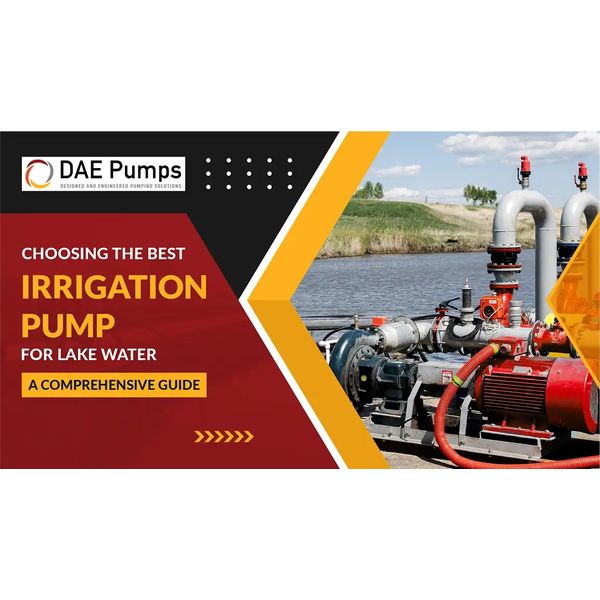
Choosing the best pump for lake water irrigation isn’t a decision to take lightly. It involves understanding your irrigation system’s specific needs and considering factors like water volume requirements, elevation changes, and energy efficiency. So, for instance, a shallow well jet pump is an efficient solution for lake irrigation, using suction to draw water from depths of up to 25 feet and deliver consistent pressure for watering large landscapes. Modern lake pumps for irrigation come with advanced features, such as variable speed controls and self-priming capabilities, to maximize efficiency and reliability and often feature a simple installation process.
This comprehensive guide explores the key considerations when selecting an irrigation pump for lake water, from assessing system requirements to understanding the latest pump technologies. Whether you’re managing a large-scale agricultural operation or maintaining a landscaped garden, making an informed choice will ensure the sustainability and success of your irrigation efforts. By investing in the right lake irrigation equipment, you not only enhance productivity but also contribute to responsible water management practices.
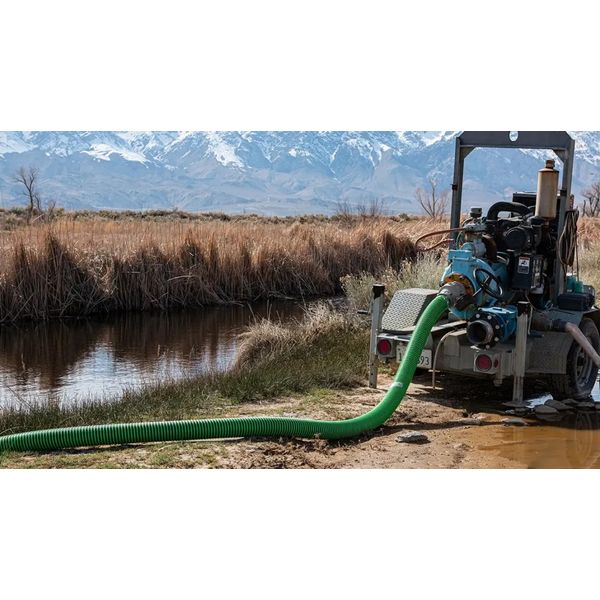
Irrigation systems that draw water from lakes are a practical and efficient solution for supplying water to agricultural fields, golf courses, gardens, and other landscapes. These systems rely on a well-coordinated process of drawing, filtering, and distributing water, ensuring that plants receive adequate hydration while maintaining the system’s longevity.
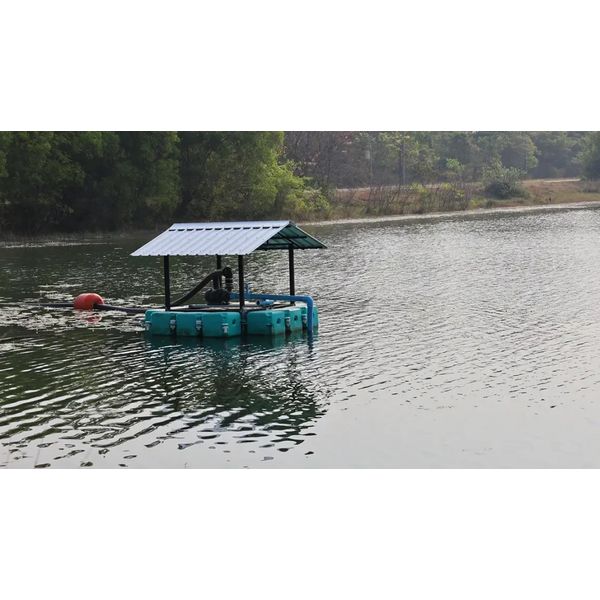
The operation of an irrigation pump for a lake begins with the intake process, where pipes or hoses are submerged in the lake to draw water into the system. The intake setup often includes a screen or mesh to prevent large debris from entering the pipeline. This initial step ensures a steady flow of water while minimizing the risk of clogs or damage to downstream components.
Once water is drawn, it passes through a filtration mechanism, an essential system component. Filters remove debris, sediment, and organic matter that could harm the irrigation pump for lake use or obstruct the irrigation network. Depending on the water quality, filtration systems may include coarse screens, fine mesh filters, or advanced sand separators. Proper filtration is critical for maintaining the pump’s performance and extending its operational life.
The irrigation pump is the heart of the system for lake water applications. This device generates the suction needed to draw water from the lake and creates the pressure required to distribute it efficiently. Pumps used in lake irrigation systems come in various designs, including centrifugal pumps, submersible pumps, and booster pumps. The choice of irrigation pump for the lake depends on the specific requirements of the application, such as flow rate, pressure needs, and system configuration. It is also important to choose the correct size of a sprinkler pump based on the number of sprinkler heads in operation.
In addition to the irrigation pump for the lake, the distribution network plays a significant role. This network comprises pipes, sprinklers, or drip lines that deliver water to the targeted areas. The design and layout of the distribution system impact water delivery efficiency and coverage. For example, drip lines are ideal for conserving water in gardens, while sprinklers are better suited for expansive golf courses or agricultural fields.
Several factors affect the performance and efficiency of a lake irrigation pump. Comparing the required gallons per minute (gpm) with the pump performance chart is crucial to ensure the pump can meet the system’s demands effectively. The pump’s motor power, impeller design, and construction materials are critical for handling varying water qualities and meeting system demands. External factors, such as the distance from the lake to the irrigation area, elevation changes, and the presence of debris or algae in the water, also play a significant role. Proper sizing and installation of the irrigation pump for the lake ensure consistent water flow and reduce energy consumption.
Understanding these components and factors is essential for optimizing a lake irrigation system. Regular maintenance, such as cleaning filters and inspecting the pump, ensures long-term reliability and effectiveness, making these systems a valuable asset for efficient water management.
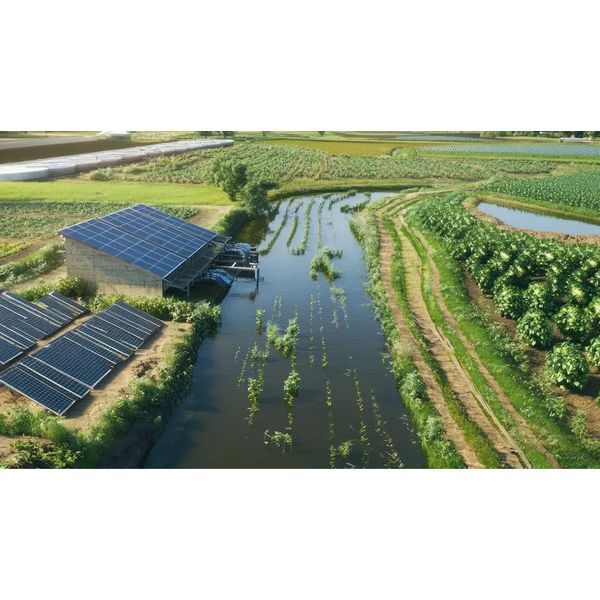
Selecting the right type of irrigation pump for lake use is crucial for designing an efficient irrigation system that meets your specific needs. Lake irrigation systems rely on different pump types, each tailored to handle specific conditions, water volumes, and pressure requirements.
When installing a jet pump, it is essential to ensure proper installation conditions to prolong the life of the pump. The pump should be placed on a level foundation and protected from extreme temperatures. Detailed instructions for setup and operation should be followed to ensure optimal performance. Regular maintenance, such as checking for leaks and ensuring the pump is free from debris, is also crucial.
Here’s a detailed overview of the most commonly used lake pumps for irrigation:
Centrifugal Pumps
Centrifugal pumps are among the most widely used pump types for lake irrigation due to their versatility and simplicity. They operate using a spinning impeller that creates centrifugal force, drawing water through the pump and out into the irrigation system. These pumps are ideal for applications requiring moderate flow and pressure levels.
Advantages:
- Ease of Maintenance: Because centrifugal pumps have fewer moving parts, they are relatively easy to maintain, making them a cost-effective choice for many irrigation systems.
- Cost-Effectiveness: These pumps are typically less expensive than other types and are suitable for medium to large-scale irrigation projects.
- Durability: Their straightforward design ensures reliability in a range of conditions.
Limitations:
- Centrifugal pumps are less efficient for applications requiring high pressure or significant elevation changes.
- They need to be primed before use, which may require additional setup in some systems.
These pumps are most effective for lake irrigation systems without steep elevation challenges and where consistent medium-pressure water flow is sufficient.
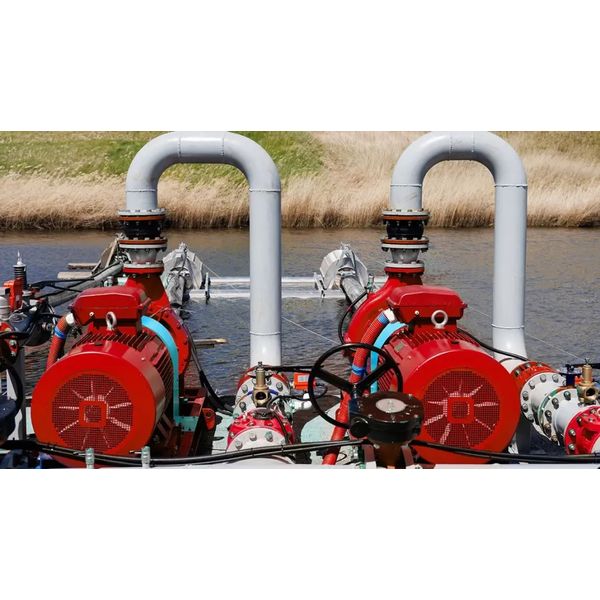
Submersible Pumps
Submersible pumps are designed to be fully submerged in the lake, allowing them to push water to the surface rather than pulling it like centrifugal pumps. This design eliminates the need for priming, enhances efficiency, and reduces energy loss.
Advantages:
- Efficiency: Submersible pumps are highly efficient, especially for deep water sources where other pumps may struggle.
- Silent Operation: These pumps operate underwater and produce virtually no noise, making them an excellent choice for residential or noise-sensitive areas.
- Durability: Built to withstand underwater conditions, submersible pumps are generally robust and long-lasting.
Limitations:
- Submersible pumps are more expensive than centrifugal pumps, both in upfront cost and potential repair expenses.
- Installation and removal can be more challenging due to their underwater placement.
These pumps are ideal for deep lakes or systems requiring high-capacity irrigation, where efficiency and reliability are paramount.
Booster Pumps
Booster pump are specialized devices used to increase water pressure in an existing lake irrigation system. They are often paired with other pump types to ensure that water reaches distant zones or areas with significant elevation changes.
Advantages:
- Pressure Enhancement: Booster pumps are designed to ensure uniform water distribution across large or uneven landscapes.
- Compact Design: These pumps are small, energy-efficient, and easy to integrate into existing systems.
- Versatility: They can be used in various irrigation setups to meet specific needs.
Limitations:
- Booster pumps are not standalone solutions and require an existing pump system to function.
- Their role is supplementary, so they may not address issues unrelated to pressure deficiencies.
Booster pumps are particularly valuable in large-scale irrigation systems, such as agricultural fields or golf courses, where consistent water delivery across expansive areas is essential.
Choosing the Right Pump
The choice of pump for lake irrigation depends on factors such as the size of the irrigation area, elevation changes, water volume requirements, and budget. Understanding the capabilities and limitations of each pump type ensures an efficient and cost-effective irrigation system that meets your specific needs.
When choosing the right sprinkler pump, consider factors like horsepower, suction lift, and the number of sprinkler heads to ensure it meets your specific requirements.
By selecting the appropriate irrigation pump for lake systems and integrating it with the right components, you can optimize water usage, reduce operational costs, and maintain consistent irrigation performance.
Utilizing lake water for irrigation is a cost-effective and sustainable solution that supports efficient water management while catering to the needs of agricultural, landscaping, and recreational applications. Beyond the financial advantages, this practice also contributes to environmental conservation and enhances the efficiency of irrigation systems. Here’s a detailed look at the key benefits:
Economic Advantages
One of the primary benefits of using lake water for irrigation is the significant cost savings. By sourcing water directly from a natural lake, users can eliminate the expenses associated with municipal water supplies or drilling and maintaining wells. This is particularly advantageous for large-scale agricultural operations or golf courses that require substantial amounts of water.
The availability of lake water reduces water procurement costs and ensures a consistent and reliable water supply, even during periods of drought or water restrictions. This reliability is crucial for maintaining healthy crops, lawns, and landscapes, especially in regions where water scarcity is a concern.
Environmental Benefits
Using lake water for irrigation promotes sustainability and reduces the strain on other freshwater resources, such as groundwater. Over-extraction from aquifers can lead to depletion and ecological imbalance, whereas utilizing surface water from lakes helps distribute the demand more evenly across available resources.
Modern irrigation systems further enhance environmental benefits by incorporating energy-efficient irrigation pumps for lakes and advanced filtration technologies. These systems reduce energy consumption and prevent unnecessary water waste. By adopting sustainable irrigation practices, users contribute to preserving ecosystems and promoting responsible water usage for future generations.
Additionally, efficient use of lake water minimizes the environmental impact associated with traditional irrigation methods. For example, over-reliance on municipal water can lead to increased infrastructure demands, while excessive well drilling can disrupt natural water tables.
Optimized Water Usage
Modern lake pumps for irrigation play a vital role in ensuring that lake water is used efficiently. These pumps are often equipped with advanced features such as variable-speed motors, precision controls, and real-time monitoring capabilities. These technologies allow the lake pump to adjust its output based on the actual water demand, ensuring that only the required amount of water is delivered to the irrigation system.
Properly winterizing a sprinkler system is crucial to prevent damage during freezing temperatures. Draining the system and taking safety precautions can help avoid costly repairs, and homeowners should consider hiring professionals if unsure about the process.
Efficient water usage not only conserves resources but also prevents over-irrigation, which can have adverse effects on soil health. Overwatering can lead to soil erosion, nutrient leaching, and water runoff, which can harm plants and reduce agricultural yields. By maintaining optimal moisture levels, modern irrigation systems promote healthier crops and landscapes while reducing the risk of water-related soil degradation.
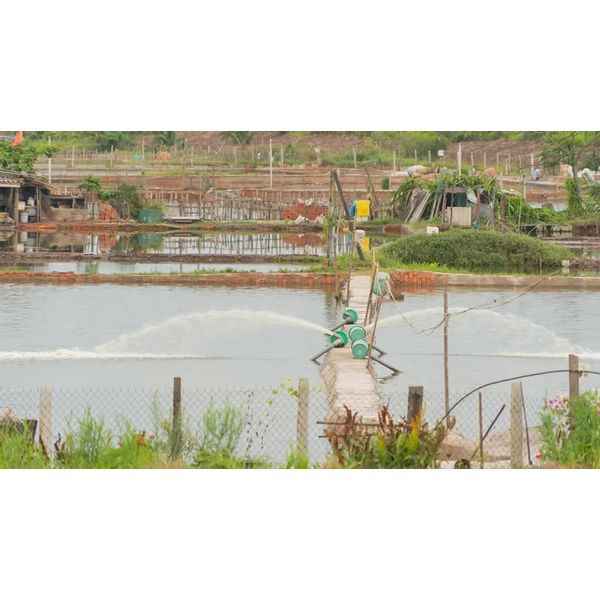
Choosing the right irrigation pump for lake use is essential to ensure efficient water delivery, long-term reliability, and optimal performance. Several factors must be carefully evaluated to align the pump’s capabilities with your specific irrigation needs. Here’s a comprehensive guide to help you make an informed decision:
Pump Size and Capacity
The size and capacity of the irrigation pump for the lake are critical to its effectiveness. These parameters are measured in terms of flow rate (gallons per minute or GPM) and head pressure (the height water can be lifted). To determine the right pump, consider:
- Irrigation Area Size: Larger areas require higher flow rates to ensure adequate water coverage.
- Elevation Changes: If your system involves pumping water uphill or over significant distances, you’ll need an irrigation pump for a lake with sufficient head pressure to overcome these challenges.
- System Design: The type of irrigation system (e.g., drip lines, sprinklers) affects water flow and pressure requirements.
Additionally, positioning the pump appropriately in relation to the water level is crucial for optimal performance. The center line of the pump should be as close as possible to the water level during installation to avoid motor issues and enhance the longevity of the equipment.
Choosing a pump that matches your system’s demand prevents inefficiencies, such as underperforming water delivery or excessive energy consumption.
Material Durability
Lake water can contain sediments, algae, and organic matter that may accelerate wear and tear on pumps. Selecting an irrigation pump for a lake made from durable, corrosion-resistant materials is vital. Commonly used materials include:
- Stainless Steel is highly resistant to rust and corrosion, making it ideal for long-term exposure to water and impurities.
- High-Grade Plastics: Lightweight and resistant to many chemicals, offering durability at a lower cost.
Durable materials reduce the likelihood of breakdowns and extend the pump’s operational lifespan, ensuring consistent performance even in challenging conditions.
Energy Efficiency
Energy costs account for a significant portion of irrigation expenses. An energy-efficient irrigation pump for the lake is equipped with variable-speed motors that can adjust their output to meet real-time demand, reducing unnecessary energy consumption. Although these pumps may have a higher upfront cost, their reduced operational expenses and environmental benefits make them a smart long-term investment.
Look for pumps with high-efficiency ratings and features like programmable controls to optimize performance and minimize energy waste.
Maintenance and Reliability
Regular maintenance is necessary to keep irrigation pumps for the lake running smoothly. When selecting a pump, consider:
- Ease of Maintenance: Pumps with simple designs and accessible components are easier to inspect, clean, and repair.
- Brand Reputation: Choosing an irrigation pump for the lake from a reputable manufacturer ensures better reliability, access to customer support, and the availability of replacement parts.
- Durability Under Pressure: Choose a pump that can handle prolonged operation without overheating or frequent breakdowns.
- Properly Reinforced Suction Hose: Ensure the pump is equipped with a properly reinforced suction hose to effectively connect the pump to the water source, which is crucial for both portable and permanent lawn pump setups.
Investing in a high-quality, reliable pump minimizes downtime and reduces the total cost of ownership over its lifespan.
By considering these factors—capacity, durability, energy efficiency, and maintenance—you can choose an irrigation pump that delivers optimal performance, meets your specific needs, and ensures long-term cost savings.
DAE Pumps has established itself as a leader in the irrigation industry. It offers a wide range of high-performance lake pumps tailored to diverse applications. With decades of experience and a commitment to quality, DAE Pumps provides solutions that combine efficiency, durability, and reliability.
Why Choose DAE Pumps?
DAE Pumps offers an extensive selection of products designed specifically for lake water irrigation. Whether you need a centrifugal pump for medium-scale operations or a submersible pump for deep lakes, DAE has a solution to meet your needs. Our lake irrigation pumps are built with robust materials to withstand harsh conditions, ensuring long-term performance and minimal maintenance.
Customer Success Stories
Many customers have transformed their irrigation systems with DAE Pumps. For example, a large agricultural farm reduced energy consumption by 30% after upgrading to a DAE centrifugal pump. Similarly, a golf course achieved uniform water distribution and enhanced turf quality using DAE’s booster pumps. These success stories underscore the value and reliability of our products.
Selecting the best pump for lake water irrigation impacts efficiency, sustainability, and cost-effectiveness. By understanding your irrigation system’s unique requirements and considering factors like pump type, capacity, and energy efficiency, you can make an informed choice that delivers long-term benefits.
DAE Pumps is dedicated to helping you achieve optimal lake irrigation performance. Explore our range of high-quality lake pumps for irrigation to find the perfect solution for your needs. Contact us today to learn more or schedule a consultation.
